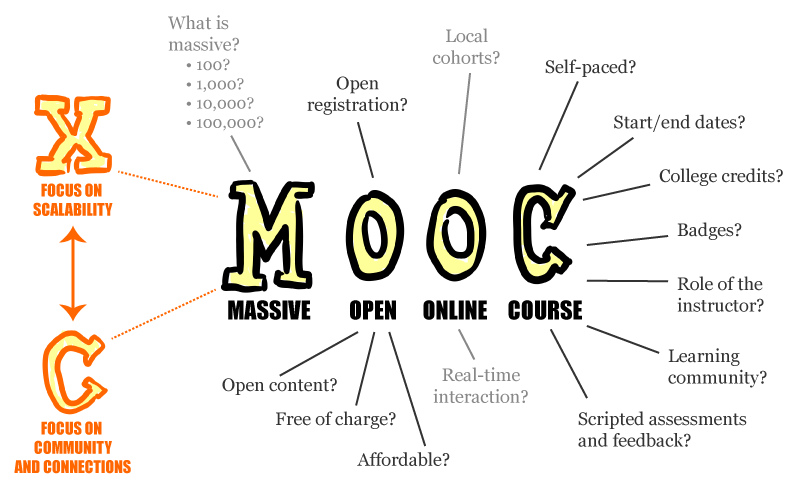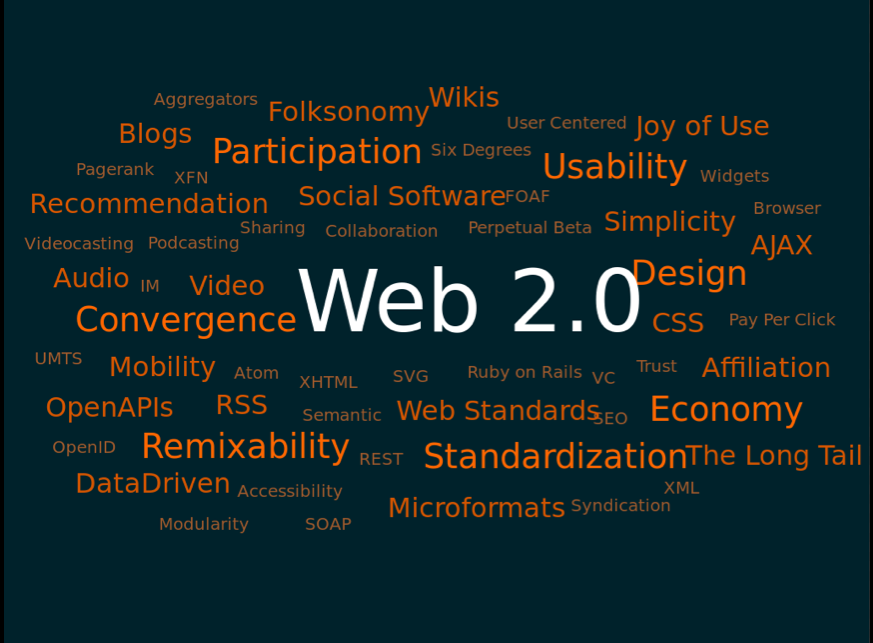MOOCs Image courtesy of Mathieu Plourde licensed CC-BY on Flickr Massive Open Online Courses (MOOC) are a great way to get free training from qualified professionals at the college level. Coursera is probably best know for offering this sort of opportunity. Classes taken this way do not usually generate college credit; however, students can often earn a certificate documenting their success and may gain enough insight through their courses to earn recognition at work or in other college programs. The big benefits of courses like these are choice, convenience, the fact that they are free, and the experience and/or knowledge to be gained. The downsides are that there is not generally college credit given and there is a high non-completion rate. I mean, really, when it is free and life is busy, it is easy to set aside and not finish. Many sign up and don't even start their courses. The jury is still out on the efficacy of offering MOOCs. Are colleges just wasting time offering free courses where so many will not start or will not complete? It may be that the value for the public in general, and the possibility of attracting students to for-credit paid courses, makes offering a MOOC worthwhile, even with the high attrition rate. MOOCs also give professors a chance to try things out and experiment a bit, which can lead to better classes both paid and free. | LMS Learning Management Systems (LMS) are a major tool in offering academic online learning. The popularity of each LMS tends to wax and wane over time, but the use of an LMS is crucial to anyone presenting a deeply involved and detailed course of study. Blackboard, Moodle, Schoology, Edmodo, Open Class, and a host of others are being used in both K-12 and Higher Ed settings. There are also colleges who have created their own LMS. If a school buys an online courses program or subscription from a vendor, they get one built around that company's LMS. These would include offerings like Plato, OdysseyWare, NovaNet, ED202 and the like. Blog sites like WordPress have also been developed into LMSs, though there is a pretty big learning curve for individudals who want to go that route. For WordPress users, there is learndash.com, a site hosted by Justin Ferriman. Justin has built a business around creating the plug-ins needed to make a WordPress blog into an LMS and also offers great tips and links to anyone interested in creating online learning. Bottom line - if you intend to develop online learning, you need to know how to use an LMS. Fortunately the same set of skills can be used across them all. Beginners might want to try something like Schoology. If you have skills in creating and uploading video and other files, Coursesites by Blackboard is more sophisticated and similar to the LMS you would use if you were taking college courses. If you work for a school, you may have to use the LMS provided by your district or college. Either way, the skills you learn using your organization's LMS will translate into any other you should try to use, so it's all good. | Web 2.0 Tools Dale Dougherty, a vice-president of O'Reilly Media Inc., is often credited with having coined the term "Web 2.0" in 2004, though Darci DiNucci seems to be the term's originator. But what is it, exactly, and why should someone interested in creating online learning care? The general idea of Web 2.0 is that of newer generation web sites that are more interactive and given to collaboration that earlier web sites had been. As a teacher, Web 2.0 meant online tools that could be used to enhance instruction. These may include simulations, wikkis, tools like SketchUp, blog sites, and so forth. The truth is, there are so many resources out there now, it can be a little overwhelming. Most educators focus on tools that match their subject area. This is where becoming part of a community of educators online can really help. There are many Google Groups focused on online/blended learning. There are also great sites like edutopia.org If you are serious about using Web 2.0 tools and resources, you should search out and join groups online. "Web 2.0 Map" by Original by Markus AngermeierVectorised and linked version by Luca Cremonini - Based on The huge cloud lens bubble map web2.0 web20map.pngVectorised and linked version from Web 2.0 Map Web_2.0_Map.svg. Licensed under CC BY-SA 2.5 via Wikimedia Commons. |
|
1 Comment
|
AuthorVeteran teacher qualified in educational instructional design. Archives
August 2023
Categories
All
|


 RSS Feed
RSS Feed